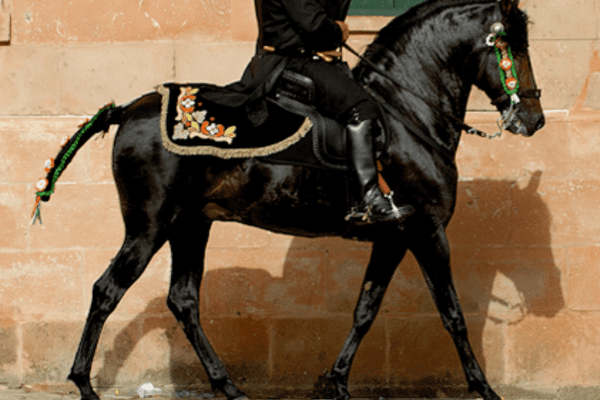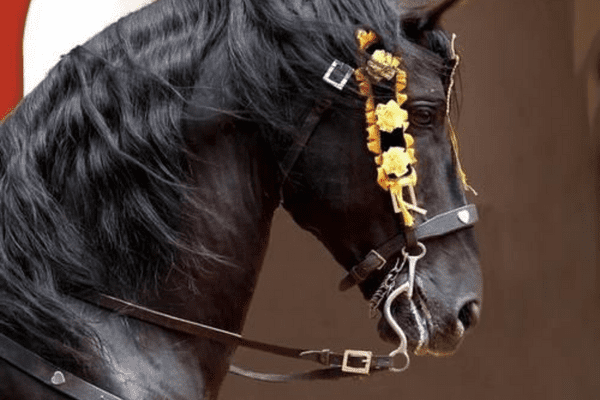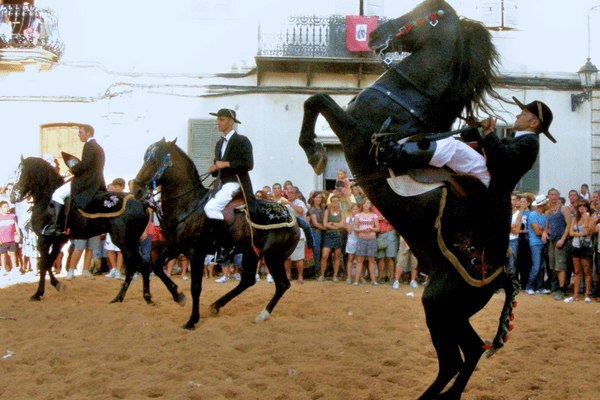Menorquin Horses, natives to Menorca – one of Spain’s Balearic Islands – are captivating equine breeds with rich histories and elegant characteristics that epitomize strength and elegance. A living symbol of Menorca’s heritage, these horses have become an integral part of its cultural identity – but what exactly sets it apart.
History:
The Menorquin Horse can be traced back to the 8th century during Moorish occupation of Spain. Through breeding with native breeds and Moorish horses, an impressive hybrid emerged – used not only for agriculture and transportation purposes but also in festivities which became an integral part of Menorcan tradition.
Confluence of Cultures: The Menorquín’s Intriguing Origins
The Moorish Epoch (903-1287): For over four hundred years, Menorca was under Moorish control, an era that profoundly shaped its culture, agriculture and genetic landscape, including that of Menorquin horses.
Theories of Descent: Experts continue to debate where this breed hails from, with some believing it has links with Arab breeds known for endurance and spirit, while others point to Berber lines which boast robustness and adaptability as likely sources.
European Interlude: The role of King James I of Aragon adds another layer of intrigue. Historical records hint at his introduction of Central European equine bloodlines into Menorquin ancestry, potentially expanding it even further.
Local Lineage: The Balearic government has taken the position that Menorquin culture has deep-seated roots within regional history and heritage, specifically with indigenous Iberian groups such as Catalunya horses which were extinct prior to European colonial expansion. This supports its strong Spanish connection and history.
From Shadows to Spotlight: Recognition and Conservation Efforts
1989 Marked a Landmark Moment : The late 20th century brought formal recognition, with the Menorquín officially classified as an indigenous breed, highlighting its uniqueness and historical significance.
On the Brink: With their inclusion in both national livestock catalogs and FAO lists of endangered breeds, sheepdogs have raised alarm over their threatened status, prompting initiatives for their preservation.
Population Concerns: By 2011, their numbers numbered just under 3,000, with only 200 individuals beyond the Balearic Islands living there. With such limited populations requiring immediate protection measures to avoid future outbreaks.
Guardians of the Breed: Since 1988, Associacio de Criadors y Propietaris de Cavalls de Raca Menorquina has made every effort to protect this living heritage by uniting breeders and enthusiasts behind this cause.
Distinctive Elegance: Attributes Setting the Menorquín Apart
Not for Labor: Historically, Menorquin horses differed from other equine breeds due to their non-participation in agricultural work – which was performed solely by Balearic donkeys – thus leading them to focus more on agility rather than strength when breeding traits into them.
Anatomy of Grace: Freed from tedious tasks, this breed refined their physique. These horses have become known for their slender frames, sleek coats, and almost balletic grace – becoming symbols of natural elegance and poise.
The Menorquin horse represents more than just regional pride; it serves as a living testament of Menorca’s diverse historical influences, cultural evolution and regional identity. Each gallop resonates with memories from past gallops as it stands witness to Menorca’s rich past while serving as an indicator of conservation efforts driving its future. Efforts underway to protect this noble creature are not simply meant to protect its breed, but to honor and uphold the island’s distinct cultural legacy as well.

Characteristics:
Menorquin Elegance in Black: The Menorquin is the embodiment of elegance through various intensities of black. This striking hue distinguishes it from other horses in its class; even when other colors appear they will still remain true to its classic identity.
Gentle Contrasts: Menorquins may feature understated white markings that serve as subtle accents that add depth to their beauty while not taking away from it. These markings add visual dimension rather than taking away from it.
Nature and Nurture:
Royal Bearing: Beyond their outer beauty, Menorquins also stand out for their harmonious temperament and royal bearing, betraying a longstanding lineage full of pride and poise.
Windows to Its Soul: One cannot overlook its expressive eyes. Large, round, and effervescent, they offer a vivid glimpse into the horse’s spirited and responsive nature.
Dimensions of Grace:
Statuesque Stature: With an impressive average height averaging 1.60 meters (15.3 hands), the Menorquin stands out in any crowd. Males start at 1.54 m (15.1 hands) while females typically range between 1.51 m and 1.56 meters (14.3 hands), making this breed visually striking yet consistently majestic in every way.
Versatility in Tradition and Function:
Equine Excellence: The Menorquín’s form is more than just aesthetic beauty. Beneath its sleek exterior lies a dynamo of strength and adaptability, making it perfect for a multitude of roles, be it saddle-driven tasks or carriage duties.
Cultural Cornerstone: The horse’s true crowning glory is its pivotal role in the traditional festivals of Menorca. As it showcases the delicate elevade and bot movements of the doma menorquina, the Menorquín transitions from being just a horse to a living testament of Menorcan tradition and heritage.
The Menorquín is not merely an equine breed; it’s a narrative—one that intertwines nature’s beauty with cultural richness. With every stride it takes, whether against Menorca’s picturesque horizons or amidst the island’s vibrant festivities, it perpetuates stories of an age-old legacy, echoing the melodies of tradition, pride, and natural grandeur.

The Bot Celebration:
One cannot discuss Menorquin Horses without mentioning the annual “Jaleo” festivities, with the “Bot” celebration at its heart. Here, riders demonstrate their expertise by encouraging their horses to rear up on their hind legs – an act which demonstrates both its strength and the rider’s skill.
Crowds sometimes try touching its heart during rearing as an act of good luck! This amazing spectacle not only highlights Menorcan history and culture but is an incomparable celebration.


Conservation Efforts:
At one time, Menorquin Horses faced extinction with numbers rapidly declining. Thanks to dedicated efforts from local community members, breeders, and equine enthusiasts, this unique breed was saved. Recognizing its cultural importance, initiatives were created to ensure its preservation – today, protected breeding practices guarantee its continued existence and expansion.

